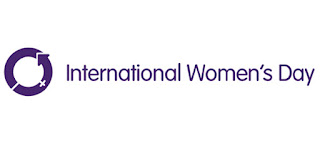Dear Aspirants,
INTERNATIONAL WOMEN'S DAY
Introduction
International Women’s Day is annually held on March 8 to celebrate
women’s achievements throughout history and across nations. It is also known as
the United Nations (UN) Day for Women’s Rights and International Peace.
International Women's Day is celebrated in many countries
around the world. It is a day when women are recognized for their achievements
without regard to divisions, whether national, ethnic, linguistic, cultural,
economic or political. International Women's Day first emerged from the
activities of labour movements at the turn of the twentieth century in North
America and across Europe.
Since those early years, International Women's Day has
assumed a new global dimension for women in developed and developing countries
alike. The growing international women's movement, which has been strengthened
by four global United Nations women's conferences, has helped make the
commemoration a rallying point to build support for women's rights and
participation in the political and economic arenas.
Chronology
1909 The first National Woman's Day was observed
in the United States on 28 February. The Socialist Party of America designated
this day in honour of the 1908 garment workers' strike in New York, where women
protested against working conditions.
1910 The Socialist International, meeting in
Copenhagen, established a Women's Day, international in character, to honour
the movement for women's rights and to build support for achieving universal
suffrage for women. The proposal was greeted with unanimous approval by the
conference of over 100 women from 17 countries, which included the first three
women elected to the Finnish Parliament. No fixed date was selected for the
observance.
1911 As a result of the Copenhagen initiative,
International Women's Day was marked for the first time (19 March) in Austria,
Denmark, Germany and Switzerland, where more than one million women and men
attended rallies. In addition to the right to vote and to hold public office,
they demanded women's rights to work, to vocational training and to an end to
discrimination on the job.
1913-1914 International Women's Day also became
a mechanism for protesting World War I. As part of the peace movement, Russian
women observed their first International Women's Day on the last Sunday in February.
Elsewhere in Europe, on or around 8 March of the following year, women held
rallies either to protest the war or to express solidarity with other
activists.
1917 Against the backdrop of the war, women in
Russia again chose to protest and strike for "Bread and Peace" on the
last Sunday in February (which fell on 8 March on the Gregorian calendar). Four
days later, the Czar abdicated and the provisional Government granted women the
right to vote.
1975 During International Women's Year, the United Nations
began celebrating International Women's Day on 8 March.
1995 The Beijing Declaration and Platform for Action, a
historic roadmap signed by 189 governments, focused on 12 critical areas of
concern, and envisioned a world where each woman and girl can exercise her
choices, such as participating in politics, getting an education, having an
income, and living in societies free from violence and discrimination.
2014 The 58th session of the Commission on the Status of
Women (CSW58) – the annual gathering of States to address critical issues
related to gender equality and women’s rights — focused on “Challenges and
achievements in the implementation of the Millennium Development Goals for
women and girls”. UN entities and accredited NGOs from around the world took
stock of progress and remaining challenges towards meeting the eight Millennium
Development Goals (MDGs). The MDGs have played an important role in galvanizing
attention on and resources for gender equality and women’s empowerment.
The UN and Gender Equality
The Charter of the United Nations, signed in 1945, was the
first international agreement to affirm the principle of equality between women
and men. Since then, the UN has helped create a historic legacy of
internationally-agreed strategies, standards, programmes and goals to advance
the status of women worldwide.
Over the years, the UN and its technical agencies have
promoted the participation of women as equal partners with men in achieving
sustainable development, peace, security, and full respect for human rights.
The empowerment of women continues to be a central feature of the UN's efforts
to address social, economic and political challenges across the globe.
International Women’s Day 2016
International Women’s Day is a time to reflect on progress
made, to call for change and to celebrate acts of courage and determination by
ordinary women who have played an extraordinary role in the history of their
countries and communities.
The 2016 theme for
International Women’s Day is “Planet 50-50 by 2030: Step It Up for Gender
Equality”.
 The idea of this theme is to consider how to accelerate the
2030 Agenda, building momentum for the effective implementation of the new
Sustainable Development Goals, especially goal number five -Achieve gender
equality and empower all women and girls- and number 4 –Ensure inclusive and
quality education for all and promote lifelong learning. The theme will also
focus on new commitments under UN Women’s Step It Up initiative, and other
existing commitments on gender equality, women’s empowerment and women’s human
rights.
The idea of this theme is to consider how to accelerate the
2030 Agenda, building momentum for the effective implementation of the new
Sustainable Development Goals, especially goal number five -Achieve gender
equality and empower all women and girls- and number 4 –Ensure inclusive and
quality education for all and promote lifelong learning. The theme will also
focus on new commitments under UN Women’s Step It Up initiative, and other
existing commitments on gender equality, women’s empowerment and women’s human
rights.
Some key targets of the 2030 Agenda:
•
By 2030, ensure that all girls and boys complete free, equitable and quality
primary and secondary education leading to relevant and Goal-4 effective
learning outcomes.
•
By 2030, ensure that all girls and boys have access to quality early childhood
development, care and preprimary education so that they are ready for primary
education.
•
End all forms of discrimination against all women and girls everywhere.
•
Eliminate all forms of violence against all women and girls in the public and
private spheres, including trafficking and sexual and other types of
exploitation.
•
Eliminate all harmful practices, such as child, early and forced marriage and
female genital mutilation.





